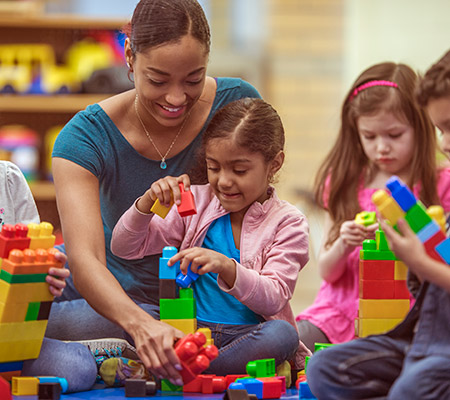
Joining your child while she plays with blocks and other building toys can help you learn what’s important to her.
Blocks may be old-fashioned toys, but they’re anything but boring. Building toys like blocks and Legos are favorites among many kids, even as they get older.
The best part is that playing with these simple toys is beneficial because they let kids use their imaginations and help them develop cognitive and motor skills.
Blocks may clutter your playroom floor, but they are toys worth buying.
Building blocks of creativity
“The main benefit of building toys is they let children be creative,” said Dr. Mary Hennessy, a Marshfield Clinic child and adolescent psychiatrist. Kids use them to create things that are pertinent to their lives.”
Infants learn about objects and sounds by shaking, dropping and squeezing toys. Toddlers and preschoolers get creative by stacking blocks to build houses or using the toys to represent objects adults use, like phones. Older kids build more complicated objects, try to make machines run, or take things apart and put them back together.
Letting kids play with building toys without a lot of structure promotes creativity. Creative play encourages learning, self-expression and self-esteem.
As their play advances, kids’ coordination, concentration, problem-solving, sequencing and spatial skills also develop.
Watch and join playtime
Watching your kids while they play is important, but not just for safety reasons. You can learn more about what is important to them by watching them play.
A child who is very interested in putting things together and taking them apart may be interested in more advanced building toys, kids’ engineering camps or hands-on classes in school.
Kids often use building toys in symbolic play, such as pretending a stack of blocks is a house. Children with autism spectrum disorder may not understand symbolic play and instead will repeat activities, or their play may not appear to have a purpose. Struggling with sequencing toys may signal an attention or learning difficulty.
If you’re concerned your child plays differently than other kids the same age, talk to your child’s pediatrician.
Joining your kids in playtime can be good for them and for you.
Playing with kids helps parents develop a positive relationship,” Hennessy said.
Think outside the blocks
Consider your child’s interests, ability level and the age range on the box when selecting toys. Parents may find a complicated toy interesting, but a child will get overwhelmed if it’s above his ability level.
Building toys are great, but giving kids access to a variety of toys also is important. Encourage kids to play with other creative toys like Play-Doh and toys that represent the real world, like cooking toys and doctor kits.
“Giving kids options for imaginative play is fun and gives them freedom to express themselves with objects they are familiar with,” Hennessy said.

